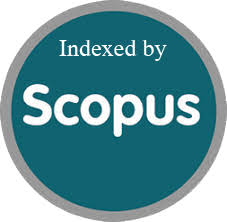Comparison of Deep Learning and Machine Learning Techniques for Automated Diagnosis of Acute Lymphoblastic Leukemia
Abstract
Acute lymphoblastic leukemia (ALL) presents major diagnostic and categorization challenges due to its wide range of clinical manifestations and the invasive nature of existing diagnostic procedures. In this work, we examine how Deep Learning (DL) and Machine Learning (ML) approaches can be used to enhance ALL diagnosis and classification using bone marrow images. We do an extensive investigation of the performance of various DL and ML models, such as Convolutional Neural Network (CNN), Feed-forward neural networks (FNN), Naive Bayes (NB), and Decision Trees (DT), using the ALL-IDB1 dataset. A developed feature extraction method based on VGG16 is proposed with feature selection based on recursive feature elimination. Our study includes fine-tuning pre-trained models, feature extraction with VGG16, and model optimization. F1 score, accuracy, and recall measures are used to assess the performance of the model. The investigation produced encouraging results, with both DL and ML models recording 100\% accuracy and excellent classification scores. Additionally, it is confirmed that automated systems based on DL and ML models have the potential to improve patient outcomes by speeding up and improving diagnosis accuracy.
References
- A. Pastorczak, K. Domka, K. Fidyt, M. Poprzeczko, and M. Firczuk, "Mechanisms of immune evasion in acute lymphoblastic leukemia," Cancers, vol. 13, no. 07, p. 1536, 2021, doi:10.3390/cancers13071536.
- D. Umamaheswari and S. Geetha, "Segmentation and classification of acute lymphoblastic leukemia cells tooled with digital image processing and ML techniques," in 2018 Second International Conference on Intelligent Computing and Control Systems (ICICCS), 2018: IEEE, pp. 1336-1341.
- E. Chen, R. Liao, M. Y. Shalaginov, and T. H. Zeng, "Real-time detection of acute lymphoblastic leukemia cells using deep learning," in 2022 IEEE International Conference on Bioinformatics andBiomedicine (BIBM), 2022: IEEE, pp. 3788-3790. doi:10.1101/2022.10.22.513362
- H. Kamel, D. Abdulah, and J. M. Al-Tuwaijari, "Cancer classification using gaussian naive bayes algorithm," in 2019 international engineering conference (IEC), 2019: IEEE, pp. 165-170.
- J. Yang and J. Ma, "Feed-forward neural network training using sparse representation," Expert Systems with Applications, vol. 116, pp. 255-264, 2019,doi:10.1016/j.eswa.2018.08.038
- K. Dese et al., "Accurate machine-learning-based classification of leukemia from blood smear images," Clinical Lymphoma Myeloma and Leukemia, vol. 21, no. 11, pp. e903-e914, 2021, doi: 10.1016/j.clml.2021.06.025
- L. Malcovati et al., "Diagnosis and treatment of primary myelodysplastic syndromes in adults: recommendations from the European LeukemiaNet," Blood, The Journal of the American Society of Hematology, vol. 122, no. 17, pp. 2943-2964, 2013, doi.:10.1182/blood-2013-03-492884
- L. Zare, M. Rahmani, N. Khaleghi, S. Sheykhivand, and S. Danishvar, "Automatic Detection of Acute Leukemia (ALL and AML) Utilizing Customized Deep Graph Convolutional Neural Networks," Bioengineering, vol. 11, no. 7, p. 644, 2024. doi:10.3390/bioengineering11070644
- M. Hosseinzadeh et al., "A Diagnostic model for acute lymphoblastic leukemia using metaheuristics and deep learning methods," arXiv preprint arXiv:2406.18568, 2024.
- M. M. Taye, "Theoretical understanding of convolutional neural network: Concepts, architectures, applications, future directions," Computation, vol. 11, no. 3, p. 52, 2023. doi:10.3390/computation11030052
- M. N. Q. Bhuiyan, S. K. Rahut, R. A. Tanvir, and S. Ripon, "Automatic acute lymphoblastic leukemia detection and comparative analysis from images," in 2019 6th International Conference on Control, Decision and Information Technologies (CoDIT), 2019: IEEE, pp. 1144-1149.
- M.-E. Percival, C. Lai, E. Estey, and C. S. Hourigan, "Bone marrow evaluation for diagnosis and monitoring of acute myeloid leukemia," Blood reviews, vol. 31, no. 4, pp. 185-192, 2017. doi:10.1016/j.blre.2017.01.003
- N. Ahmed, A. Yigit, Z. Isik, and A. Alpkocak, "Identification of leukemia subtypes from microscopic images using convolutional neural network," Diagnostics, vol. 9, no. 3, p. 104, 2019, doi:10.3390/diagnostics9030104
- N. W. S. Wardhani, M. Y. Rochayani, A. Iriany, A. D. Sulistyono, and P. Lestantyo, "Cross-validation metrics for evaluating classification performance on imbalanced data," in 2019 international conference on computer, control, informatics and its applications (IC3INA), 2019: IEEE, pp. 14-18.
- P. K. Das, V. Diya, S. Meher, R. Panda, and A. Abraham, "A systematic review on recent advancements in deep and machine learning based detection and classification of acute lymphoblastic leukemia," IEEE access, vol. 10, pp. 81741-81763, 2022.
- R. Kansal, "Diagnosis and Molecular Pathology of Lymphoblastic Leukemias and Lymphomas in the Era of Genomics and Precision Medicine: Historical Evolution and Current ConceptsPart 1: Lymphoid Neoplasms," Lymphatics, vol. 1, no. 2, pp. 55-76, 2023 ,doi:10.3390/lymphatics1020007
- R. R. Putri, E. P. Mandyartha, and A. S. Indrawanti, "Automatic Identification of Acute Lymphoblastic Leukemia on Blood Cell An image Using Geometric Features," in IOP Conference Series: Materials Science and Engineering, 2019, vol. 462, no. 1: IOP Publishing, p. 012018, doi:10.1088/1757-899X/462/1/012018
- S. Anwar and A. Alam, "A convolutional neural networkbased learning approach to acute lymphoblastic leukaemia detection with automated feature extraction," Medical & biological engineering & computing, vol. 58, no. 12, pp. 3113-3121,2020,doi:10.1007/s11517-020-02282-x
- S. Chand and V. Vishwakarma, "Leukemia diagnosis using computational intelligence," in 2019 International Conference on Issues and Challenges in Intelligent Computing Techniques (ICICT), 2019, vol. 1: IEEE, pp. 1-7.
- S. Rajpurohit, S. Patil, N. Choudhary, S. Gavasane, and P. Kosamkar, "Identification of acute lymphoblastic leukemia in microscopic blood image using image processing and machine learning algorithms," in 2018 International conference on advances in computing, communications and informatics (ICACCI), 2018: IEEE, pp. 2359-2363.
- S. S. Al-jaboriy, N. N. A. Sjarif, S. Chuprat, and W. M. Abduallah, "Acute lymphoblastic leukemia segmentation using local pixel information," Pattern Recognition Letters, vol. 125, pp. 85-90, 2019, doi:10.1016/j.patrec.2019.03.024
- S. Shafique, S. Tehsin, S. Anas, and F. Masud, "Computer-assisted acute lymphoblastic leukemia detection and diagnosis," in 2019 2nd International Conference on Communication, Computing and Digital systems (C-CODE), 2019: IEEE, pp. 184-189.
- U. Saeed, K. Kumar, M. A. Khuhro, A. A. Laghari, A. A. Shaikh, and A. Rai, "DeepLeukNetA CNN based microscopy adaptation model for acute lymphoblastic leukemia classification," Multimedia Tools and Applications, vol. 83, no. 7, pp. 21019-21043, 2024,doi:10.1007/s11042-023-16191-2
- Y. Izza, A. Ignatiev, and J. Marques-Silva, "On explaining decision trees," arXiv preprint arXiv:2010.11034, 2020.








